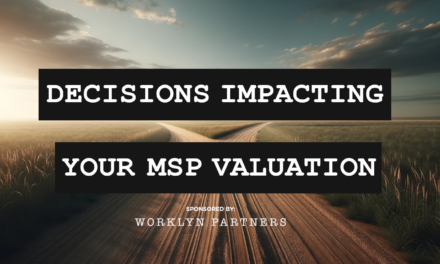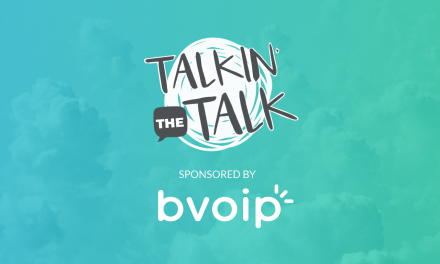“Dos & Don’ts” Of Finding SMB Content Collaborators
Like many things, creating content is far more complicated when you are doing it alone. This is why I always encourage MSP clients to get out there and network “virtually” to find your way in front of new audiences that are similar to your own. For example, if you specialize in Legal IT, then you may find other vendors such as HR & Staffing, Software, or Marketing & Media companies that are also zeroed in on the same industry. Content collaboration opens up the door to introduce you their existing audience and vice-versa.
While it may appear (based on what you see in the IT Channel), that you could snap your fingers and get someone to collaborate with you immediately, it is not that simple. If you do find someone that is itching to cross-promote, it may be because they have more to gain than you do. The business development side of content marketing is a process in itself and it is one that you need to develop and refine over time.
I recently caught up with NinjaRMM‘s Content Director, Jonathan Crowe to talk about this as he has been a visible “connector” in the IT Channel for the past few years. Here is what he had say on the topic:
The Ultimate Guide To Cash Flow For Managed Services
Sponsored by Alternative Payments & Zest
Do: Scout Publications, Forums, and Events
If you want to find other like-minded vendors that service your customer base, then you have to investigate your way into the community. Find out where these Business Owners gather, communicate, and network with each other on a regular basis. This could be an in-person networking group, an online forum, or trade associations.
You will immediately begin to take notice of who the loudest voices are coming from in these communities. These may be the individuals running the group themselves, or outspoken members and sponsors. These are the people you should target for your cross-promotional efforts and will likely have the highest rate of success overall.
Don’t: Try To “Convert” Someone To Content
Not every business or organization is familiar with the content marketing model and many do not have the knowledge and/or resources available to execute this strategy on a “whim.” This is because creating content often requires skills such as writing, video editing, and design that can be expensive and slow to outsource.
When you are looking to partner on a content project, find someone that is already actively doing one. They know the processes, have the tools, and can make things happen quickly. Better yet, they will also know how to promote the content after it is created in order to get the utmost engagement. If you are trying talk a partner into collaborating and find yourself explaining far more than expected, it may be time to cut bait. There are plenty of people that already have these wheels in motion, so there is not need to try to move those who don’t.
Do: Look For Partners With High Engagement
When you are evaluating whether or not a company would be a good fit, look first to the size of their audience. LinkedIn, Facebook, Twitter and YouTube/Podcast followings are all good indicators of the influence that they have and what they can bring to the table. Even if the audiences appear small, don’t make any assumptions right away. This could just mean that they are not as invested in one particular platform or may have influence in a not-so public way.
What is more important than just the size of the audience, is the engagement that it produces. You may find that some companies or influencers have a large following, yet their activity is rarely seen. I try to look at the last 30 days of LinkedIn activity to see how many “likes and comments” appeared on their posts in comparison to their audience size. Doing this will help you to set an expectation for the activity that you would expect see if your own content was cross-promoted through that channel.
Don’t: Overvalue The Size Of An Audience
There have been a few times in my career where I put a lot of effort into a “big opportunity” that at face value seemed it would produce a ton of exposure. What I have found is that there never appears to be some large “breakout” moment where the gates open and people rush to your feet to listen to what you have to stay. Influence has to be earned one person at a time, no matter how large of an audience you are speaking to.
This is why I now favor doing smaller events and content projects that are highly targeted to a group that I know will be engaged. These might not be with “big name” partners, but they are often those who have the most loyal and excitable following. When it comes to this type of marketing, making an impact on one person is far better than being tuned out by thousands.
The Ultimate Guide To Cash Flow For Managed Services
Sponsored by Alternative Payments & Zest
Do: Reciprocate As Much Value As Possible
Asking someone to collaborate is a lot like picking your group for a “school project.” You want to find the people that you know will be active and contribute (and ultimately work well with others). If you ever ended up with the “lazy kid” in your group, you know how annoying this can be and how the end results is always ultimately effected.
At the same time, it is important not to be “that kid” yourself and make sure that you are reciprocating as much value as possible throughout the process. Sometimes small one-time engagements can lead to more impactful frequent ones and the more effort you put in, the more likely people are to want to work with you again.
Don’t: Pay For One-sided Engagements
You may be tempted to hire well-known “keynote speakers” that require payment for their inclusion. While this may help to validate your platform in a lot of ways, this typically ends up doing more for the speaker than it does for you. Even if the person or company does have a large following, they do not always bring the size crowd that you may anticipate and it’s entirely possible that they get paid and generate the same amount of awareness that you do.
This is why as a general rule of thumb, I would always attempt to find as many free cross-promotional relationships as possible before paying for them. It may be more legwork on the business development side to spark these relationships, but when there is no money exchanging hands right away, it allows more time for partnerships to develop and long term value to be realized.

SPONSORED BY ZEST

















